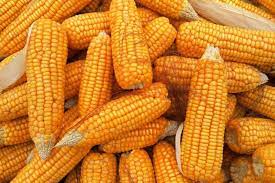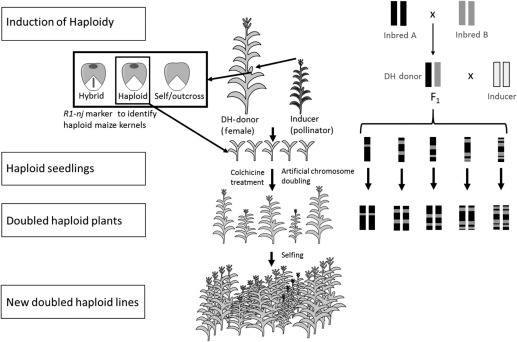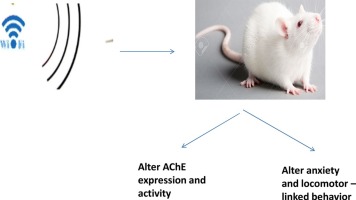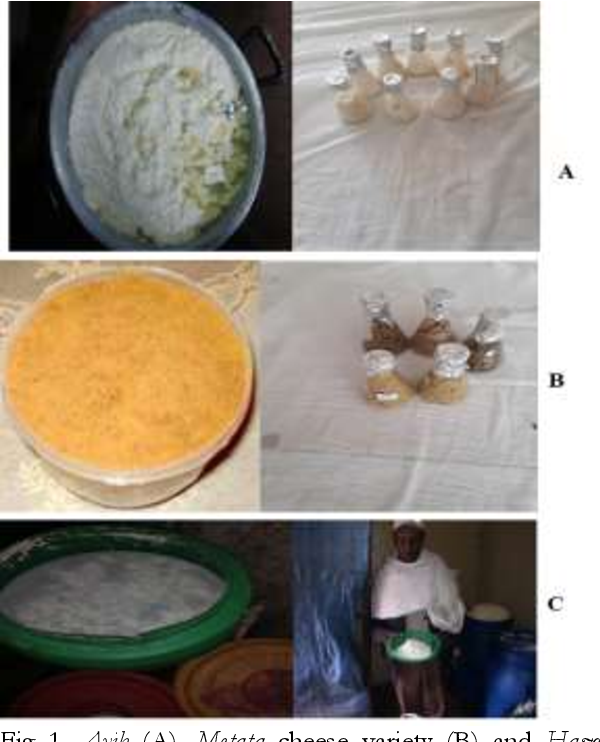Diversity of Okra [Abelmoschus esculentus (L.) Moench] Genotypes in Ethiopia
Downloads
Background: Ethiopia is considered as a center of origin of okra [Abelmoschus esculentus (L.) Moench], but
limited information is available on the genetic diversity of the crop in the country.
Objectives: This research was conducted to assess the genetic diversity of okra genotypes in Ethiopia.
Materials and Methods: Twenty-nine okra genotypes collected from Ethiopia and three varieties of the
crop obtained from other countries were evaluated for 24 morpho-agronomic traits for two seasons in
Ethiopia in a randomized complete block design with three replications. Besides, 19 Simple Sequences
Repeats (SSRs) primers were used to assess the genetic diversity of okra genotypes.
Results: The genotypes showed significant differences for 24 morpho-agronomic traits. The number of days required by the genotypes to reach the first fruit harvest ranged from 55 to 84 days; the average plant height of the genotypes ranged from 106 cm to 173 cm, tender fruit weight from 14.65 g to 31.43 g, fruit yield per hectare from 0.89 t ha–1 to 32.13 t ha–1 , number of seeds per pod ranged from 59 to 124 and hundred seeds weight ranged from 5.3 to 7.16 g. Growing season, genotype, and year and genotype interacted to significantly influence most of the traits except internode length, leaf length, and width, number of fruits per plant and number of ridges and seeds per pod and hundred seeds weight. The four principal component axes accounted for 72.588% of the total variation with an Eigenvalue of 8.702 to 1.645. The Euclidian distances between pair of genotypes ranged from 2.36 to 12.36 as estimated from 24 morpho-agronomic traits and grouped the genotypes into nine clusters. The 18 SSRs polymorphic primers amplified 120 fragments with a size of 61 to 414 bp. Euclidean distances calculated from120 alleles ranged from 2.2 to 7.10 and grouped the genotypes into seven distinct clusters. The distances of genotypes as estimated from SSRs and morpho-agronomic traits showed significant and positive linear relationships.
Conclusion: The diversity of the crop was assessed efficiently both by SSRs markers and data from morpho-agronomic traits. This implies that the genetic diversity existing among the studied okra genotypes represented varied morpho-agronomic traits, which can be used for the development high yielding new varieties for enhancing production of the vegetable crops in the country.
Abbo, S., Lev-Yadun, S. and Gopher, A. 2010. Agricultural origins: Centers and noncenters. A near eastern reappraisal. Critical Reviews in Plant
Sciences, 29: 317–328.
Adelakun, O.E., Oyelade, O.J., Ade-Omowaye, B.I.O., Adeyemi, I.A. and Van de, M. 2009. Influence of pre-treatment on yield, chemical and antioxidant properties of Nigerian okra seed (Abelmoschus esculentus Moench) flour: Food Chemistry Toxicology, 47(3): 657–61.
Agrama, H.A. and Tuinstra, M.R. 2003. Phylogenetic diversity and relationships among sorghum accessions using SSRs and RAPDs. African Journal of Biotechnology, 2: 334–340.
Ahiakpa, J.K., Kaledzi, P.D., Adi, E.B., Peprah, S. and Dapaah, H.K. 2013. Genetic diversity, correlation and path analyses of okra [Abelmoschus
spp. (L.) Moench] germplasm collected in Ghana. International Journal Development and Sustainability, 2(2): 1396–1415.
Akanbi, W.B., Togun, A.O., Adediran J.A. and Ilupeju, E.A.O. 2010. Growth, dry matter and fruit yield components of okra under organic and inorganic
sources of nutrients. American-Eurasian Journal of
Sustainable Agriculture, 4(1): 1–13.
Aladele, S.E. 2009. Morphological distinctiveness and
metroglyph analysis of fifty accessions of West
African okra. Journal of Plant breeding and Crop
Science, 1: 273–80.
Anwar, F., Umer, R., Zahid, M., Tahira, I., Tufail, H. and
Sherazi, I. 2011. Inter-varietal variation in the
composition of okra (Hibiscus esculentus L.) seed
oil. Pakistan Journal of Botany, 43(1): 271–280.
Ariyo, O.J. and Vaughan, A. 2000. Analysis of genotype
x environment interactions of okra [Abelmoschus
esculentus (L.) Moench.]. Journal of Genetics and
Breeding, 54: 35–40.
Benchasri, S. 2012. Okra [Abelmoschus esculentus (L.)
Moench] as a valuable vegetable of the world
ratar. Ratarstvoipovrtarstvo, 49: 105–112.
Blair, M.W., Diaz, L.M., Buendia, H.F. and Duque, M.C.
Genetic diversity, seed size associations and
population structure of a core collection of
common beans (Phaseulus vulgaris L.). Theoretical
Applied Genetics, 119: 955–972.
Chahal, G.S. and Gosal S.S. 2002. Principles and Procedures
of Plant Breeding Biotechnology and Conventional
Approaches. Narosa Publishing House, New
Delhi. Pp. 43.
Chakravarthi, B.K. and Naravaneni, R. 2006. SSR
marker based DNA fingerprinting and diversity
study in rice (Oryza sativa. L.). African Journal of
Biotechnology, 5(9): 684–688.
Christine, J.H., William, A. and Stacy, A. 2009. Genetic
diversity of creeping bentgress cultivars using
SSR marker. International Turfgress Society Research
Journal, 11: 533–547.
Crispo, E., Bentzen, P., Reznick, D.N., Kinnison, M.T.
and Hendry, A. P. 2006. The relative influence of
natural selection and geography on gene flow in
guppies. Molecular Ecology, 15: 49–62.
Eivazi, A.R., Naghavi, M.R., Hajheidari, M., Mohammdi,
S.A., Majidi, S.A., Salakdeh, I. and Mardi, M.
Assessing wheat genetic diversity using
quality trait, amplified fragment length
polymorphism, simple sequence repeats and
proteome analysis. Annual Application Biology, 152:
–91.
Etminan, A., Pour-Aboughadareh, A., Noori, A.,
Ahmadi-Rad, A., Shooshtari, L., Mahdavian, Z.
and Yousefiazar-Khanian, M. 2018. Genetic
relationships and diversity among wild Salvia
accessions revealed by ISSR and SCoT markers.
Biotechnology & Biotechnological Equipment, 32(3):
–617.
Falconer, D.S. and Mackay, T.F.C. 1996. An Introduction
to Quantitative Genetics. 4th edition. Printice Hall,
London, England. Pp. 153.
FAO (Food and Agriculture Organization of the United
Nations). 2014. FAOSTAT web.
http://faostat.fao.org/site/567/Desktop.
Default.aspx?PageID=567#ancor. Accessed on
December 2014.
Fufa, H., Baenziger, P.S., Beecher, B.S., Dweikat, I.,
Graybosch, R.A. and Eskridge, K.M. 2005.
Comparison of phenotypic and molecular
marker-based classifications of hard red winter
wheat cultivars. Euphytica, 145: 133–146.
Hailay Desta, Lipsitch, M., Awash Teklehaimanot and
Schwartz, J. 2004. Weather-based prediction of
Plasmodium falciparum malaria in epidemic-prone
regions of Ethiopia I. Patterns of lagged weather
effects reflects biological mechanisms. Malaria
Journal, 3(41):1–11.
IPGRI (International Plant Genetic Resources
Institute). 1991. Okra Descriptor List.
International Crop Network Series 5.
International Board for Plant Genetic Resources
(IBPGR), Rome, Italy.
Jaynes, E. T. 2003. Probability Theory: The Logic of Science.
Cambridge University Press, Cambridge. Pp. 347.
Jindal, S.K., Arora, D. and Ghai, T.R. 2008. Stability
analysis for earliness in okra [Abelmoschus esculentus
(L.) Moench]. Journal of Research Punjab Agriculture
University, 45(3 & 4): 45–55.
Kaur, K., Pathak, M., Kaur, S., Pathak, D. and Chawla,
N. 2013. Assessment of morphological and
molecular diversity among okra [Abelmoschus esculentus (L.) Moench.] germplasm. African Journal
of Biotechnology, 12: 3160–3170.
Khanam, S., Sham, A., Bennetgen, J.L. and Mohammed,
A.M.A. 2012. Analysis of molecular markerbased characterization and genetic variation in
date palm (Phoenix dactylifera L.). Australian Journal
of Crop Science, 6: 1236–1244.
Knowles, L.L. and Richards, C.L. 2005. Importance of
genetic drift during Pleistocene divergence as
revealed by analyses of genomic variation.
Molecular Ecology, 14: 4023–4032.
Kumar, S., Parekh, M.J., Fougat, R.S., Patel, S.K., Patel,
C.B., Kumar, M. and Patel, B.R. 2017.
Assessment of genetic diversity among okra
genotypes using SSR markers. Journal of Plant
Biochemistry and Biotechnology, 26(2): 172–178.
Kumari, M., Solankey, S.S., Kumar, K., Kumar, M. and
Singh, A.K. 2019. Implication of multivariate
analysis in breeding to obtain desired plant type
of okra [Abelmoschus esculentus (L.) Moench].
Current Journal of Applied Science and Technology,
(4): 1–8.
Mason, N.A. and Taylor, S.A. 2015. Differentially
expressed genes match bill morphology and
plumage despite largely undifferentiated genomes
in a holarctic songbird. Molecular Ecology, 24:
–3025.
Maurya, R.P., Bailey, J.A. and Chandler, J.S. 2013.
Impact of plant spacing and picking interval on
the growth, fruit quality and yield of okra
[Abelmoschus esculentus (L.) Moench]. American
Journal of Agriculture and Forestry, 1(4): 48–54.
Metais, I., Aubry, C., Hamon, B., Jalouzot, R. and Peltier,
D. 2000. Description and analysis of genetic
diversity between commercial bean lines
(Phaseulus vulgaris L.). Theoretical Applied Genetics,
: 1207–1214.
Mihretu Yonas, Weyessa Garedew and Adugna Debela.
Multivariate analysis among okra
[Abelmoschus esculentus (L.) Moench] collection in
southwestern Ethiopia. Journal of Plant Sciences, 9:
–50.
MoANR (Ministry of Agriculture and Natural
Resources). 2016. Crop Variety Register, Issue
No. 19. Addis Abeba, Ethiopia. Pp.211.
Mudhalvan, S. and Senthilkumar, N. 2018. Studies on
genetic divergence for fruit yield in Abelmoschus
esculentus (L.) Moench genotypes under coasta eco-system. Journal of Plant Stress Physiology, 4: 41–44.
Muluken Demelie, Wassu Mohammed and Endale
Gebre. 2015. Genetic diversity of Ethiopian okra
collections through multivariate analysis at
Werer, Rift Valley of Ethiopia. The International
Journal of Science & Technology, 3(8): 186–192.
Muluken Demelie, Wassu Mohammed and Endale
Gebre. 2016. Variability, heritability and genetic
advance in Ethiopian okra [Abelmoschus esculentus
(L.) Monech] collections for tender fruit yield and
other agro-morphological traits. Journal of Applied
Life Sciences International, 4(1): 1–12.
Nosil, P., Vines, T.H. and Funk, D.J. 2005. Reproductive
isolation caused by natural selection against
immigrants from divergent habitats. Evolution, 59:
–719.
Nwangburuka, C.C., Denton, O.A., Kehinde, O.B., Ojo,
D.K. and Popoola, A.R. 2012. Genetic variability
and heritability in cultivated okra [Abelmoschus
esculentus (L.) Moench]. Spanish Journal of
Agricultural Research, 10(1): 123–129.
Oppong-Sekyere, D., Akromah, R., Nyamah, E.Y.,
Brenya, E. and Yeboah, S. 2011. Characterization
of okra (Abelmoschus spp. L.) germplasm based on
morphological characters in Ghana. Journal of
Plant Breeding and Crop Science, 3(13): 367–378.
Osawaru, M.E., Ogwu, M.C. and Dania-Ogbe, F.M.
Morphological assessment of the genetic
variability among 53 accessions of West African
okra [Abelmoschus caillei (A. Chev.) Stevels] from
southwestern Nigeria. Nigerian Journal of Basic and
Applied Science, 21(3): 227–238.
Peakall, R. and Smouse, P.E. 2012. GenAlEx 6.5:
Genetic analysis in Excel. Population genetic
software for teaching and research an update.
Bioinformatics, 28: 2537–2539.
Perrier, X. and Jacquemoud-Collet, J.P. 2006. DARwin
software. Available at
http://www.darwin.cirad.fr/darwin.html.
Pluess, A.R. and Stocklin, J. 2004. Population genetic
diversity of the clonal plant Geum reptans
(Rosaceae) in the Swiss. Alps. American Journal of
Botany, 91(12): 2013–2021.
Priya, S., Varun, C., Brahm, K.T., Shubhendra, S.C.,
Sobita, S., Bilal, S. and Abidi, A.B. 2014. An
overview on okra (Abelmoschus esculentus) and its
importance as a nutritive vegetable in the world. International Journal of Pharmacy and Biological Sciences, 4(2): 227–233.
Rao, P.U. 1985. Chemical composition and biological
evaluation of okra (Hibiscus esculentus) seeds and
their kernels. Quality Plant Food Human Nutrition,
: 389–396.
Reddy, T.M., Haribhau, K., Ganesh, M., Chandrasekhar,
R.K. and Begum, H. 2012. Genetic divergence
analysis of indigenous and exotic collections of
okra [Abelmoschus esculentus (L.) Moench]. Journal of
Agricultural Technology, 8(2): 611–623.
Roldán-Ruiz, I., van Euwijk, F., Gilliland, T.J., Dubreuil,
P., Dillmann, C., Lallemand, J., De Loose, M. and
Baril, C.P. 2001. A comparative study of
molecular and morphological methods of
describing relationships between perennial
ryegrass (Lolium perenne L.) varieties. Theoretical
Applied Genetics, 103: 1138–1150.
Saifullah, M. and Rabbani, M.G. 2009. Evaluation and
characterization of okra [Abelmoschus esculentus (L.)
Moench.] genotypes. SAARC Journal of
Agriculture, 7(1): 92–99.
Salameh, N.M. 2014. Flow cytometric analysis of nuclear
DNA between okra landraces (Abelmoschus
esculentus L.) American Journal of Agriculture and
Biological Sciences, 9: 245–250.
Santos, B.M., Dittmar, P.J., Olson, S.M., Webb, S.E. and
Zhang, S. 2012. Okra Production in Florida.
IFAS Extension, University of Florida. Pp. 163–
Savello, P.A., Martins, F. and Hull, W. 1980. Nutrition
composition of okra seed meals. Journal of
Agriculture and Food Chemistry, 28: 1163–1166.
Sawadogo, M., Ouedraogo, J.T., Balma, D., Ouedraogo,
M., Gowda, B.S., Botanga, C. and Timko, M.P.
The use of cross species SSR primers to
study genetic diversity of okra from Burkina
Faso. African Journal of Biotechnology, 8: 2476–2482.
Schafleitner, R., Lin, C.-Y., Lin, Y.-P., Wu, T.H., Hung,
C.H., Phooi, C.L., Chu, S.H., Jhong, Y.C. and
Hsiao, Y.Y. 2021. The world vegetable center
okra (Abelmoschus esculentus) core collection as a
source for flooding stress tolerance traits for
breeding. Agriculture, 11(165): 1–13.
Schafleitner, R., Kumar, S., Lin, C.Y. and Hegde, S.G.
The okra (Abelmoschus esculentus) transcriptome as a source for gene sequence information and molecular markers for diversity analysis. Gene, 517: 27–36.
Shalaby, G.J. 1972. Natural cross-pollination in okra.
Journal on Agriculture Science, 3(1): 381–386.
Sharma, J.R. 1998. Statistical and Biometrical Techniques in
Plant Breeding. New Age International (P) Limited
Publishers, New Delhi. Pp. 432.
Sneath, P.H.A. and Sokal, R.R. 1973. Numerical
Taxonomy: The Principles and Practice of Numerical
Classification. W.F Freeman, Fransisco, USA. Pp.
Sulikiri, G.S and Swamy, R.T. 1972. Studies on floral
biology and fruit formation in okra [Abelmoschus
esculentus (L.) Moench] varieties. Progress
Horticulture, 4: 60–71.
Sun, X., Xie, Y., Bi, Y., Liu, J., Amombo, E., Hu, T. and
Fu, J. 2015. Comparative study of diversity
based on heat tolerant-related morphophysiological traits and molecular markers in
tall fescue accessions. Scientific Reports, 5: 18213.
DOI: 10.1038/srep18213.
Tesfa Binalfew and Yosef Alemu. 2016. Characterization
of okra [Abelmoschus esculentus (L.) Moench]
germplasms collected from western Ethiopia.
International Journal of Research in Agriculture and
Forestry, 3(2): 11–17.
Tripathi, K.K., Govila, O.P,, Ranjini, W. and Vibha, A.
Biology of okra [Abelmoschus esculentus
(L).Moench]. Series of Crop Specific Biology
Document. Department of Biotechnology
Ministry of Science and Technology and Ministry
of Environment and Forests Government of
India. New Delhi, India. Pp. 22.
Van Berloo, R. 2008. GGT 2.0: Versatile software for
visualization and analysis of genetic data. Journal
of Hereditary, 99: 232–236.
Varmudy, V. 2011. Marking survey need to boost okra
exports. Department of Economics,
Vivekananda College, Puttur, Karnataka, India.
Pp. 21–233.
Wang, I.J., Glor, R.E. and Losos, J. B. 2013. Quantifying
the roles of ecology and geography in spatial
genetic divergence. Ecology Letters, 16: 175–182.
Wassu Mohammed, Amelework Beyene, and Shimelis Hussein. 2020. Simple sequence repeat markers revealed genetic divergence and population structure of okra [Abelmoschus esculentus] collections of diverse geographic origin. Australian Journal of Crop Science, 14(07): 1032–1041.
Werner, O., Magdy, M. and Ros, R.M. 2016. Molecular
systematics of Abelmoschus (Malvaceae) and
genetic diversity within the cultivated species of
this genus based on nuclear ITS and chloroplast
rpL16 sequence data. Genetic Resource Crop
Evolution, 63: 429–445.
Whitehead, W.F. and Singh, B.P. 2000. Yield, time of
maximum CO2 exchange rate, and leaf area index
of Clemson Spineless okra are affected by withinrow spacing. Horticulture Science, 35: 849–852.
Younis, R.A.A., Hassan, S.M.K. and El Itriby, H.A.
Genetic diversity as assessed by molecular
markers and morphological traits in Egyptian
okra germplasm. Global Journal of Biology,
Agriculture and Health Sciences, 4(1): 117–128.
Yuan, C.Y., Zhang, C., Wang, P., Hu, S., Chang, H.P., Xiao, W.J. and Guo, X.H. 2014. Genetic diversity analysis of okra (Abelmoschus esculentus L.) by intersimple sequence repeat (ISSR) markers. Genetics and Molecular Research, 13(2): 3165–3175
Copyright (c) 2022 Wassu Mohammed, Shewameneh Seyoum, Anteneh Bekele, Shimelis Hussen, Amelework Assefa

This work is licensed under a Creative Commons Attribution-NoDerivatives 4.0 International License.
- I am authorized by my co-authors to enter into these arrangements.
- I warrant, on behalf of myself and my co-authors, that:
- the article is original, has not been formally published in any other peer-reviewed journal, is not under consideration by any other journal and does not infringe any existing copyright or any other third party rights;
- I am/we are the sole author(s) of the article and have full authority to enter into this agreement and in granting rights to Springer are not in breach of any other obligation;
- the article contains nothing that is unlawful, libellous, or which would, if published, constitute a breach of contract or of confidence or of commitment given to secrecy;
- I/we have taken due care to ensure the integrity of the article. To my/our - and currently accepted scientific - knowledge all statements contained in it purporting to be facts are true and any formula or instruction contained in the article will not, if followed accurately, cause any injury, illness or damage to the user.
- I, and all co-authors, agree that the article, if editorially accepted for publication, shall be licensed under the Creative Commons Attribution License 4.0. If the law requires that the article be published in the public domain, I/we will notify Springer at the time of submission, and in such cases the article shall be released under the Creative Commons 1.0 Public Domain Dedication waiver. For the avoidance of doubt it is stated that sections 1 and 2 of this license agreement shall apply and prevail regardless of whether the article is published under Creative Commons Attribution License 4.0 or the Creative Commons 1.0 Public Domain Dedication waiver.
- I, and all co-authors, agree that, if the article is editorially accepted for publication in Haramaya Journals, data included in the article shall be made available under the Creative Commons 1.0 Public Domain Dedication waiver, unless otherwise stated. For the avoidance of doubt it is stated that sections 1, 2, and 3 of this license agreement shall apply and prevail.












